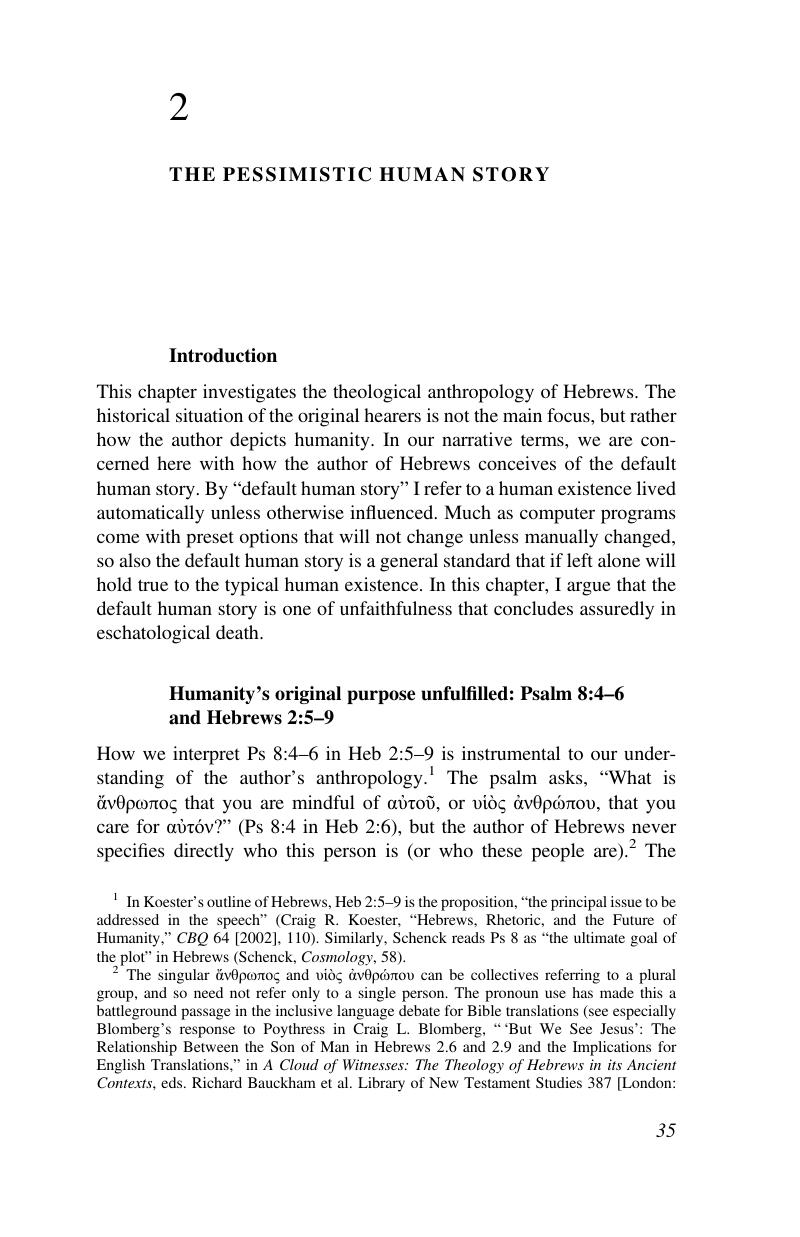Book contents
- Frontmatter
- Dedication
- Contents
- List of tables
- Acknowledgments
- Abbreviations
- Part I Introduction
- Part II The default human story
- 2 The pessimistic human story
- 3 The eschatological hope unrealized
- Part III The rewritten narrative
- Part IV Participating in the new story
- Bibliography
- Author index
- Subject index
- Index of texts
- References
2 - The pessimistic human story
from Part II - The default human story
- Frontmatter
- Dedication
- Contents
- List of tables
- Acknowledgments
- Abbreviations
- Part I Introduction
- Part II The default human story
- 2 The pessimistic human story
- 3 The eschatological hope unrealized
- Part III The rewritten narrative
- Part IV Participating in the new story
- Bibliography
- Author index
- Subject index
- Index of texts
- References
Summary

- Type
- Chapter
- Information
- Faith and the Faithfulness of Jesus in Hebrews , pp. 35 - 77Publisher: Cambridge University PressPrint publication year: 2014



